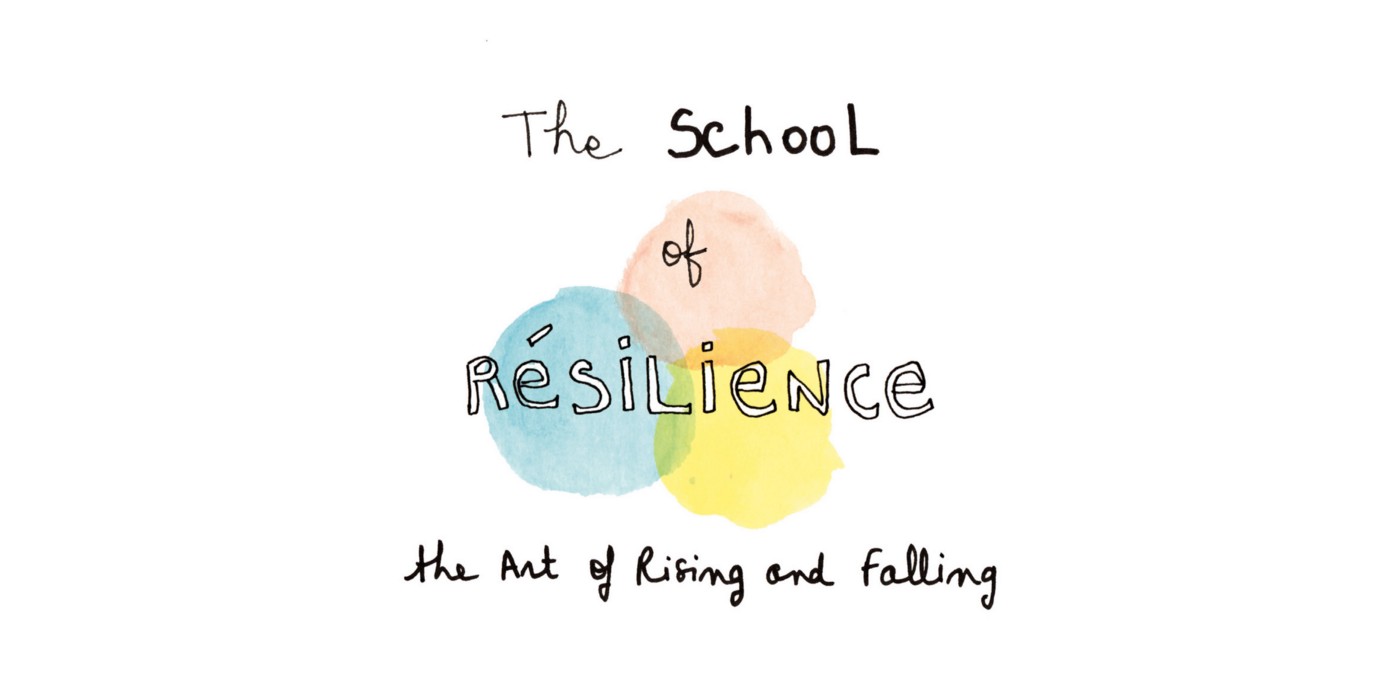
A how to guide for creatively getting up in life to build the project of your dreams. A guide for those who wonder how they can successfully navigate the hills, mountains and valleys of life so that they may never let any crisis, however big or small, go to waste.
Written with love by Chiara Condi and Illustrated from the heart by Clementine du Pontavice
“Am I resilient?”
How many times have you, like me, been asking yourself that question these last few weeks?
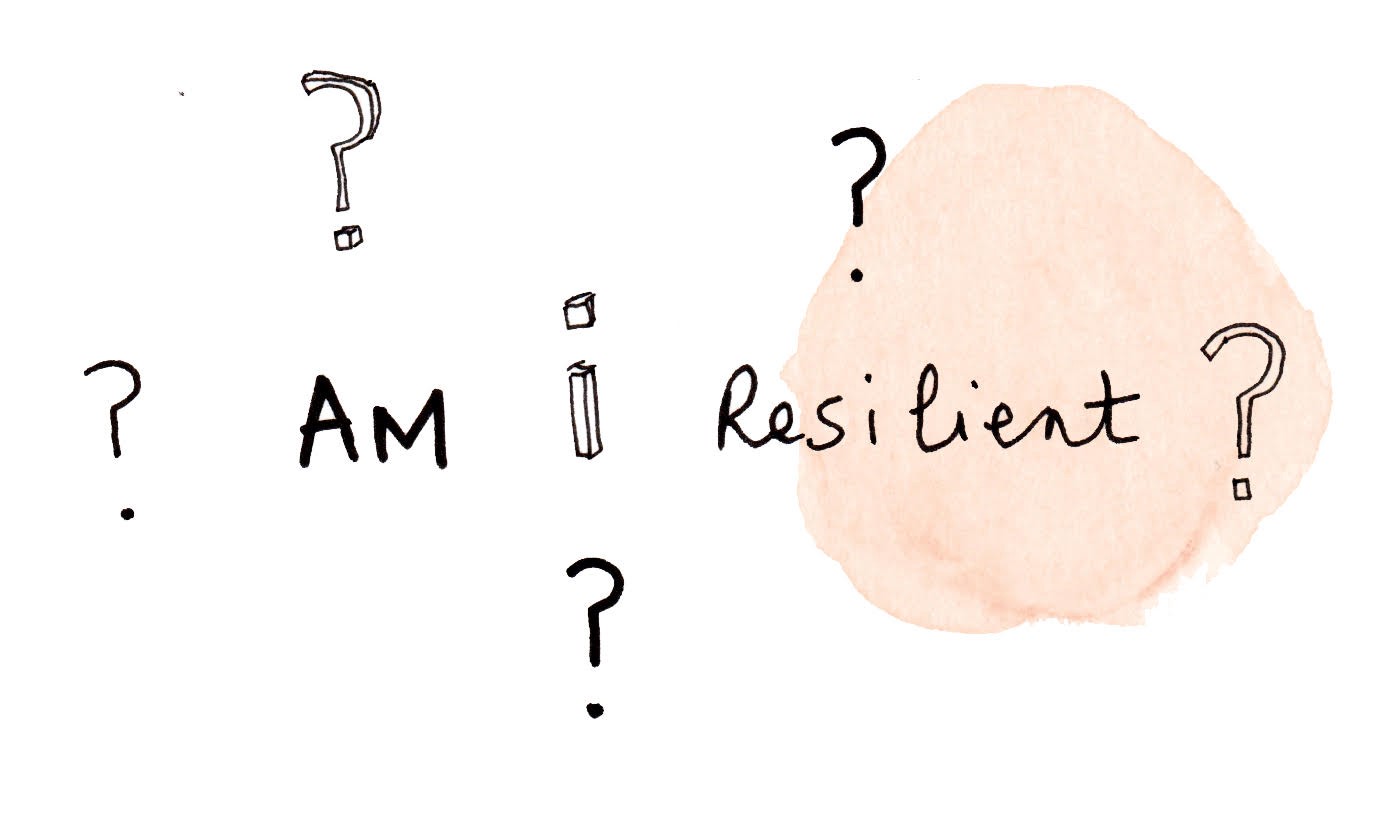
I keep hearing the word thrown into articles, webinars, and just about everywhere these days. We love to talk about resilience, Goodreads has 528 quotes about resilience. Google gives you 67 million hits for the word. And we are googling the word more than ever before since March 2020. However if you are like me you have found it difficult to apply a concept to your life that is neither truly explained nor directly tied to any real form of advice.
Resilience has personally interested me because for many years I have worked with women who have suffered from violence, helping them rebuild their lives following highly traumatic events, for whom life has a clear before and after. I have long been exploring the idea of how you can start over when everything falls apart. How exactly do you pick up the pieces to build something new, and of course better, with the remainders of your life? However, even though I have been experimenting with resilience for years, I had never thought about whether there was a formula for restarting — that is until I had to apply it in my own life. In the process I thought; what if I could transform the process of how I found my own resilience into a guide of how to be resilient? What if resilience, as I saw it, could be explained? What if what helped me could help other people too?
When my life as a speaker had to be reconsidered because of circumstances a few months ago, I started doing some research on resilience. I became interested in how I could activate my own resilience to readjust what I was doing to the new circumstances of life. Here is what I have found and what I have learned by reading, talking, learning and evolving every step of the way.
And I hope that these steps will help you in building your dreams out of the ashes.

But before we start figuring out how resilience works, let’s look at what resilience actually means and where it comes from so we understand what we are building or working on in the first place.
When I looked up the word in the Oxford dictionary I found that resilience in humans referred to:
the ability of people or things to recover quickly after something unpleasant, such as shock, injury
In the same way that inanimate things can also be resilient
the ability of a substance to return to its original shape after it has been bent, stretched or pressed (apparently wool does this — who knew!)
So resilience is about recovery, it is about getting up, coming back to where you once were — or even better than before. If you think we came up with the notion of resilience recently, think again. It has been around for a while. The word comes from the Latin term resiliens (leaping back) and was already used in the 1620s.
Francis Bacon the father of empiricism in his Sylva Sylvarum [A Natural History] made the observation that “if you strike a ball side long not full upon the surface, the rebound will need as much the contrary way; whether there be any such resilience Echos.” Resilience here refers to the recoil of something obviously inanimate after impact.
Resilience referring to the ability of a group to recover quickly from something was first used in 1857 in the Illustrated History of England referring to the Scottish resistance and resilience in the war against England. Resilience was the human ability to keep going or keep coming back despite hardships.
It was more around the 20th century that the psychological world caught onto the fact that even children who lived through trauma and difficult experiences were able to adapt and thrive in their lives, which launched the study of resilience as an attribute in humans. This was then applied to adults.
In all of its meanings the word tells us that for some reason some people or things in our world are able to come back to the way they were or even better than they were. And that for a long time we have been trying to capture that phenomenon. Is it a quality or talent we just have? Or is it a skill that we can learn, develop, and perfect in life?
I like to believe it is the latter.
If resilience is the art of getting up and rising after hardship, then it is not reserved for the realm of the extraordinary. In a way, rising and falling, happens to us on a micro level each and every day.
Have you ever experienced the stormy journey of entrepreneurship ? One day you are sailing full speed and the next you find yourself in a storm possibly shipwrecked. But the only way to succeed is that you have to keep going, believing that behind every storm you will find the sun.

As we navigate through life it is impossible to sail without problems. Roadblocks, shipwrecks, and storms, however big or small, are inevitable.
However, we are never taught resilience, we are never taught how to get ourselves back up. Are some people just born that way knowing how to get up and others not? Is resilience something that we either naturally have or do not have or is it something that we can cultivate?
And more importantly, what do you do when you fall? As one woman I helped many years ago said to me recently, “you taught me that when there is no solution, that is when you have to find the solution.” And if you actually do really think about it, there are very few problems in life to which there is no actual solution. Thankfully, most things in life remain within our power to change.
But how exactly do you find a solution when you think there is none? How do you build your own ladder to get out of this metaphoric hole and rebuild your life? Although initially I did not have a definite answer to the question, as I experimented, I found a few things that were helpful.
So here are my 5 steps for finding a solution when there is no solution. And please feel free to take whatever may be useful to bring your projects to light today.
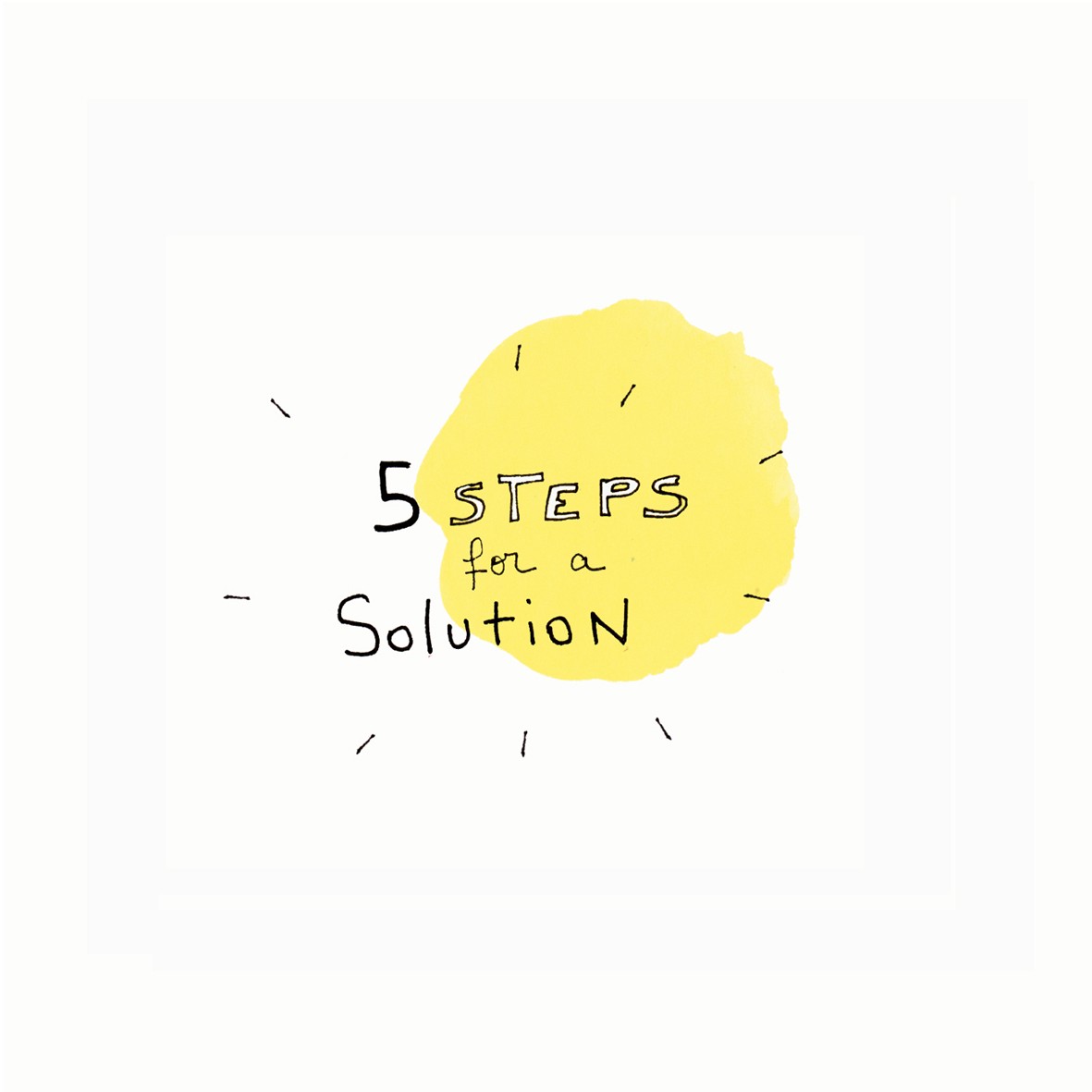
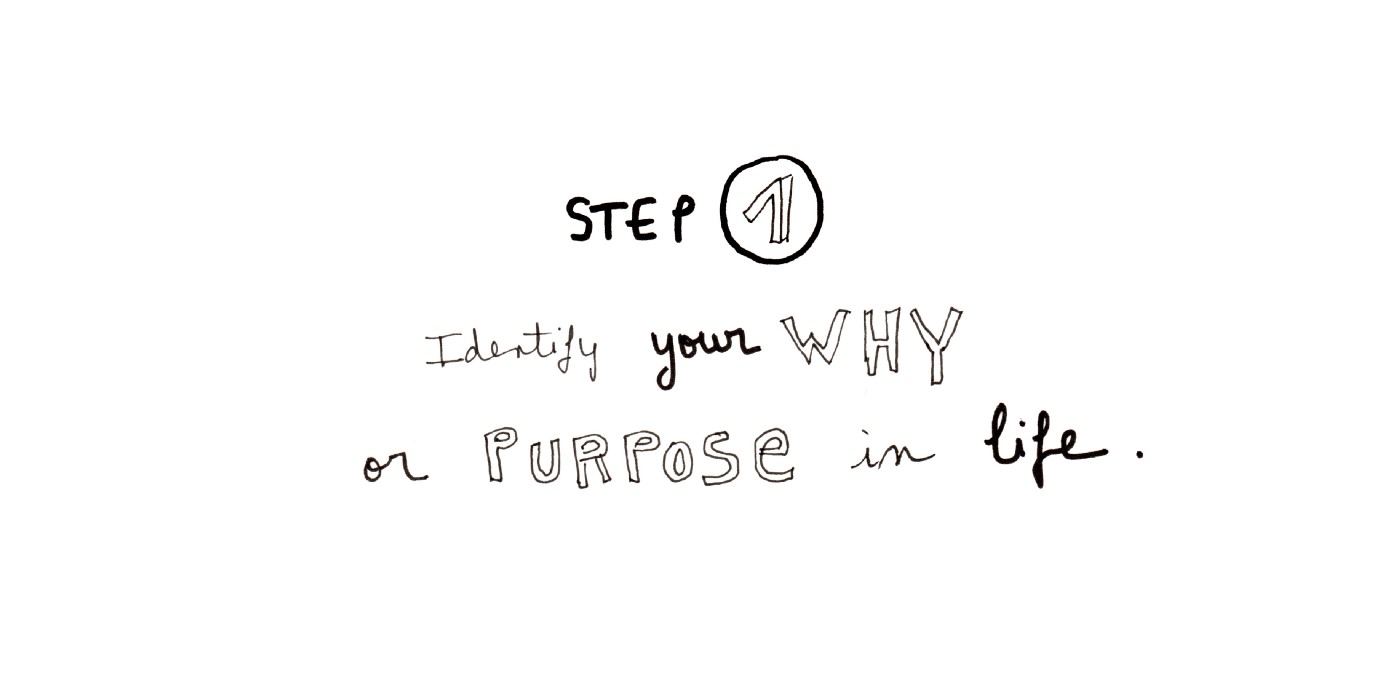
First off, if you are rebuilding, you must know what you are rebuilding.
As Simon Sinek says in his famous TED talk, which you can go and watch, it is important to start with our why. Some of us are trying to find solutions when we don’t even know what problem we are trying to solve. We are trying to find solutions when we do not know what we are trying to find those solutions for. But that that is building in the dark.
It is difficult to navigate your way out of a crisis if you do not know your purpose. Your purpose lies deep in your heart. It is the essence of your soul. A few years ago a friend of mine, Jenna Harrison told me about this book written by a yoga instructor Rod Stryker. Rod says there is a difference between your dharma and a job. Dharma is who you are and how you show up in the world no matter what job you have. It is what drives you to do everything that you do basically.
“The foundation for lasting happiness and fulfilment is finding and living your life’s purpose.” Rod Stryker
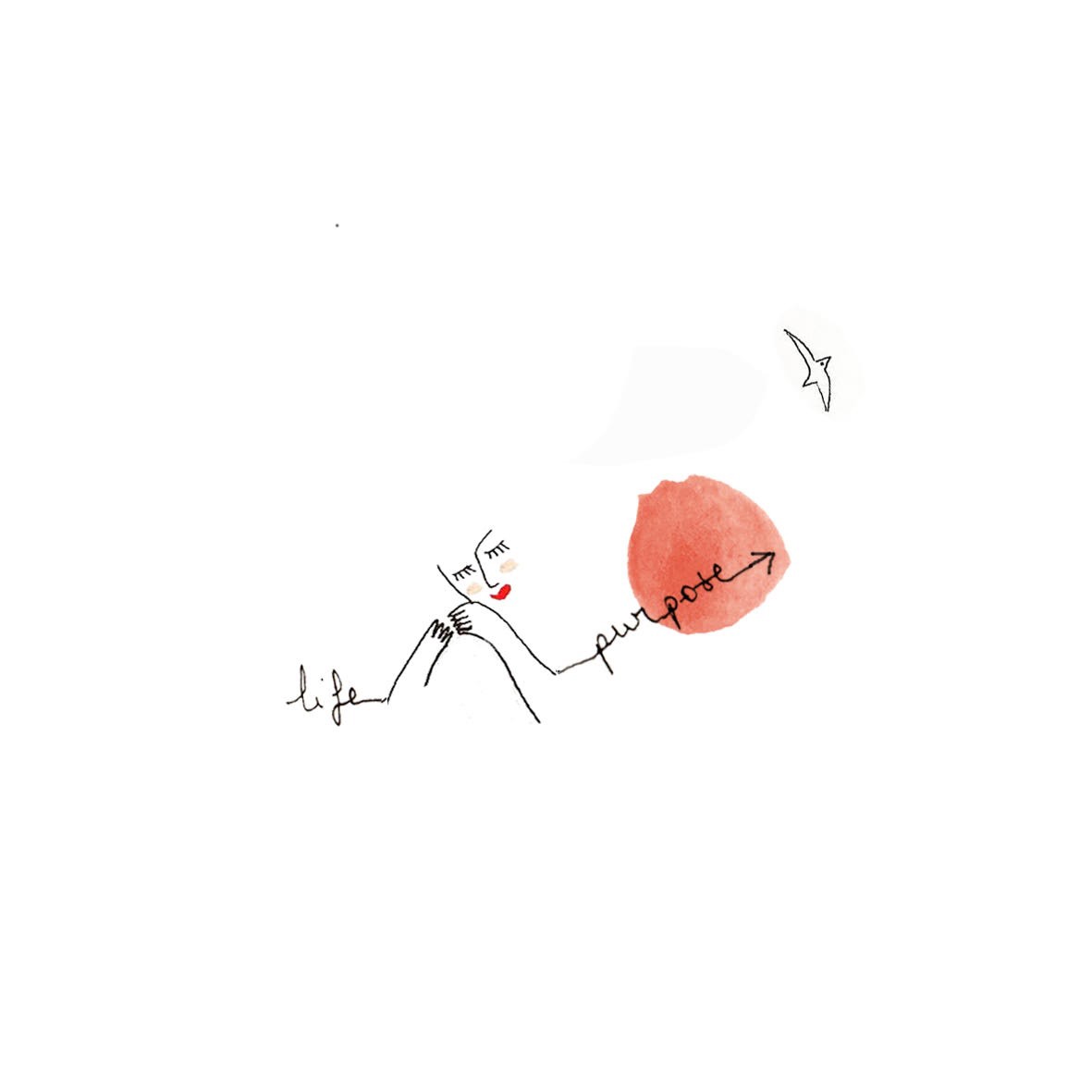
Great, sounds good! But how do you figure out what that is? Well according to Rod’s method you think about a time in your life you thrived, when you were on fire, and then write a poem about it, and there should be already a direction or purpose in your life that emerges, then come up with 3–4 themes in your life that can be positive and negative, and write down the greatest contribution and legacy you want to leave. From that you draft 2–3 sentences about what makes you live your purpose. Remember, this is how you want to be living, not what you want to achieve. I’m not sure it’s perfect, but it’s the best formula I’ve found.

I discovered my why, which is about empowering others to create a better, more inclusive world, not because I was born knowing it, but because I tried things and found something I liked. I first started working on women’s empowerment when I was offered my first job at 23 years old mainstreaming gender concerns into projects. Although at first I did not choose the issue (since the opportunity was offered to me), I became sensitive to the issue because even as a young child injustice had always outraged me. How could half the world today live so much less well in the world than the other half? Of course I needed to fix that. Because I believed heart and soul in the importance of what I was doing, I wanted to keep doing it more and more, which eventually grew more and more into an obsession over the years. Even when people are not paying me I am eager to contribute by writing articles, speaking, and participating in discussions because the subject is so important for me. I care more than anything else to solve the issue of gender inequality within my lifetime. And even though that first job was not right for me I kept trying to find new ways to work on the subject and to innovate, which I did. I’ve learned that sometimes, even when the why feels right, you still need to find the right how.

Of course having a why doesn’t only give you the direction in which to build, and tells you what to build, it also gives you the desire to get up when you fall. Which gets us back to our original idea of resilience, getting up when you fall. It is not difficult to understand why people who know why they are doing things are more likely to persevere and to keep doing things even when everything around them is going wrong. Inside they just have to. And I am fortunate enough to feel that every day that I wake up (which is good given that I have lots of work left to do since the World Economic Forum estimates we are 217 years away from achieving gender equality!).

Once I became aware that my why was to help bring more awareness to the world about gender issues and create a more inclusive, human, and empathetic world, I realized that surely doing conferences was one way of doing that, but there are many other ways of doing that too. The truth is that today I am able to convey my message to the world whether I have people physically in front of me or not. The first step is to realize just how many possible solutions there are to do exactly what you want to do and achieve what you want to achieve.
That’s why once you’ve figured out your why, or the greater direction you are building towards in life, figuring out how you will get there is easy. There are millions of ways, if you are a little creative, to build the bridge between your message and the people you want to reach.
So where exactly do you start to build your dream? What I did was that I took a large piece of paper. On top of it I wrote down my why in really big letters and put a cloud around it.
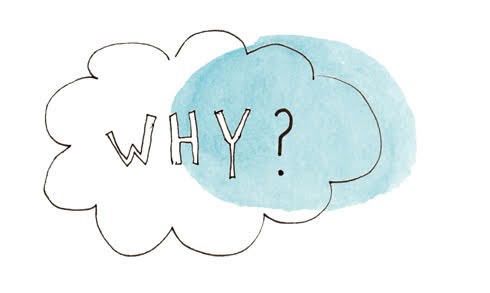
On the bottom of that sheet of paper I drew all the people I wanted to reach. Then I started to think about all the vehicles that I could use to reach those people. That’s how I transformed the intangible notion of a dream of reaching people into something concrete, the question was no longer “how do I achieve my dream?” but rather “how do I reach the people I want to reach?” That enabled me to think of and find real means, or solutions.
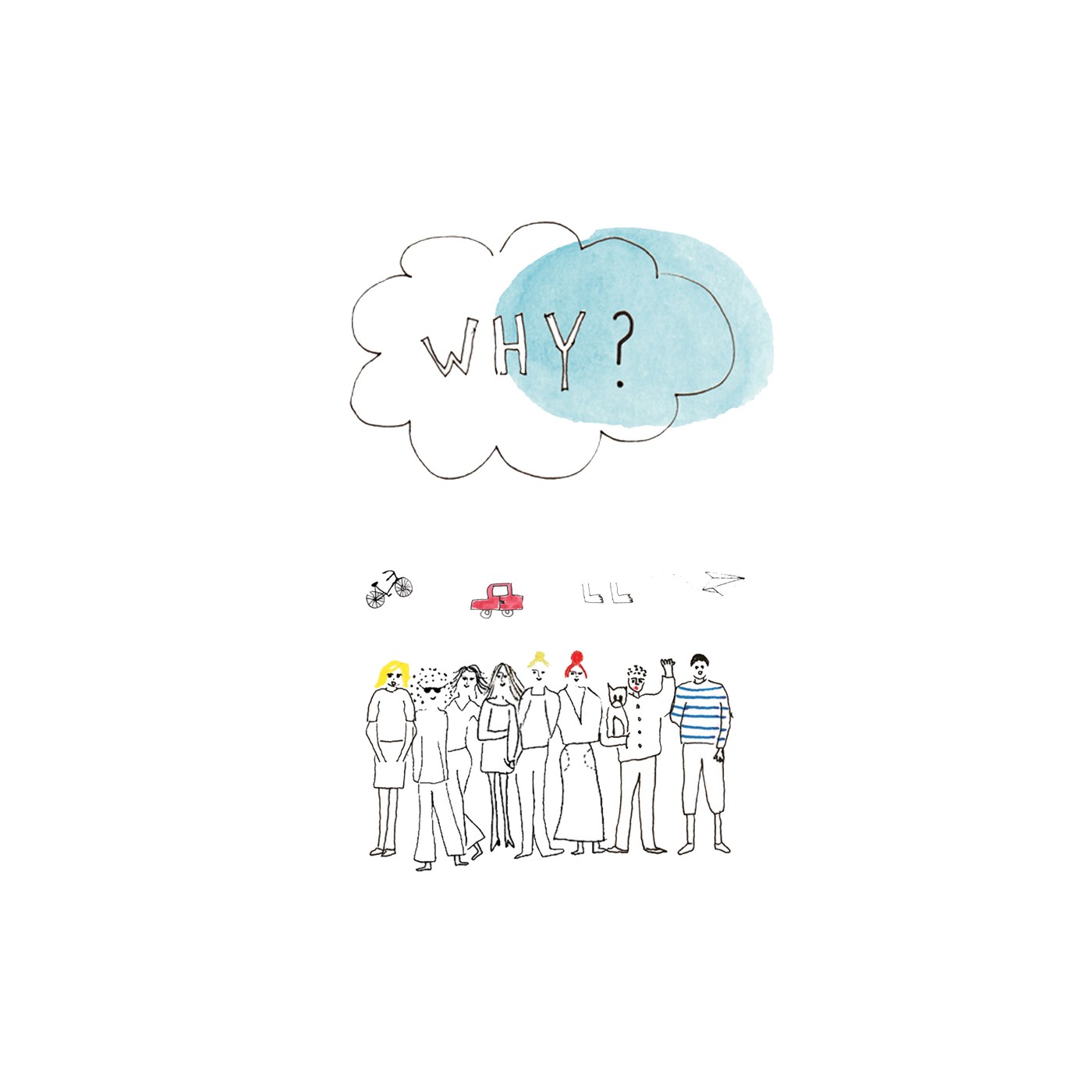
The crisis has forced me to take the message that I had thus far I delivered in one way and repurpose it so many ways. Now let me count the ways. First, I started to write a book because I thought that a book had the potential to reach more people than a conference ever could. And I felt the urge to make the world understand something that truly mattered to me. Then I worked tirelessly on my podcast, The Other Half, to interview male leaders and CEOs about their engagement on gender equality in their personal and professional lives because it is more important than ever to talk to men about the subject. People can listen to it from wherever, whenever, and it has allowed me to connect with new audiences (40% of my listeners are men!).
Now is the time to look at your own treasure chest of experiences, or toolbox, to think about how exactly you can use all that you already have for whatever you now want to build. You have to look inside at your accomplishments, experiences, and everything in your life good or bad that has made you who you are. And then think of how all that makes you great for doing something you’ve never done before. I know this can be hard, because the first thing we do, especially as women, is think about everything that we do not have. Scarcity is always a great place to start if you do not want to get anywhere. Instead we need to turn towards abundance. In life we add value because who we are and the experiences we have had, so we have to look inside and not outside at everything we’ve accumulated through the journey of life, good and bad that has made us who we are. And for everything else that we may need, there have never been more opportunities to learn with little means and without ever leaving out homes. But if we cannot see our inner abundance first, we will never build anything.

If you are still struggling to integrate your negative experiences into your journey, list them out. For every one of those experiences list five things that you have learned from it. Remember that in life nothing is ever created, destroyed or wasted — everything is just transformed.
So I started to create a big list of things that I had done. I had founded and fundraised enough for a nonprofit, I had written several articles, I had spoken on some big stages with some important people around the world, I had around a hundred media articles written about my work, and had achieved quite a few things. I am a communicator, a servant leader, and most of all a woman. There, those are at least some of my superpowers. Just with that, I realized that I had enough with which I could do a lot. And everyone has their own super powers. Super powers are no more than experiences; we are not talking about degrees, awards and external validations, but of course you can add those to your list, too!
And I do not believe that the word failure exists applied to life. Our life is an endless journey and each step on our path is simply there to take us to the next one.
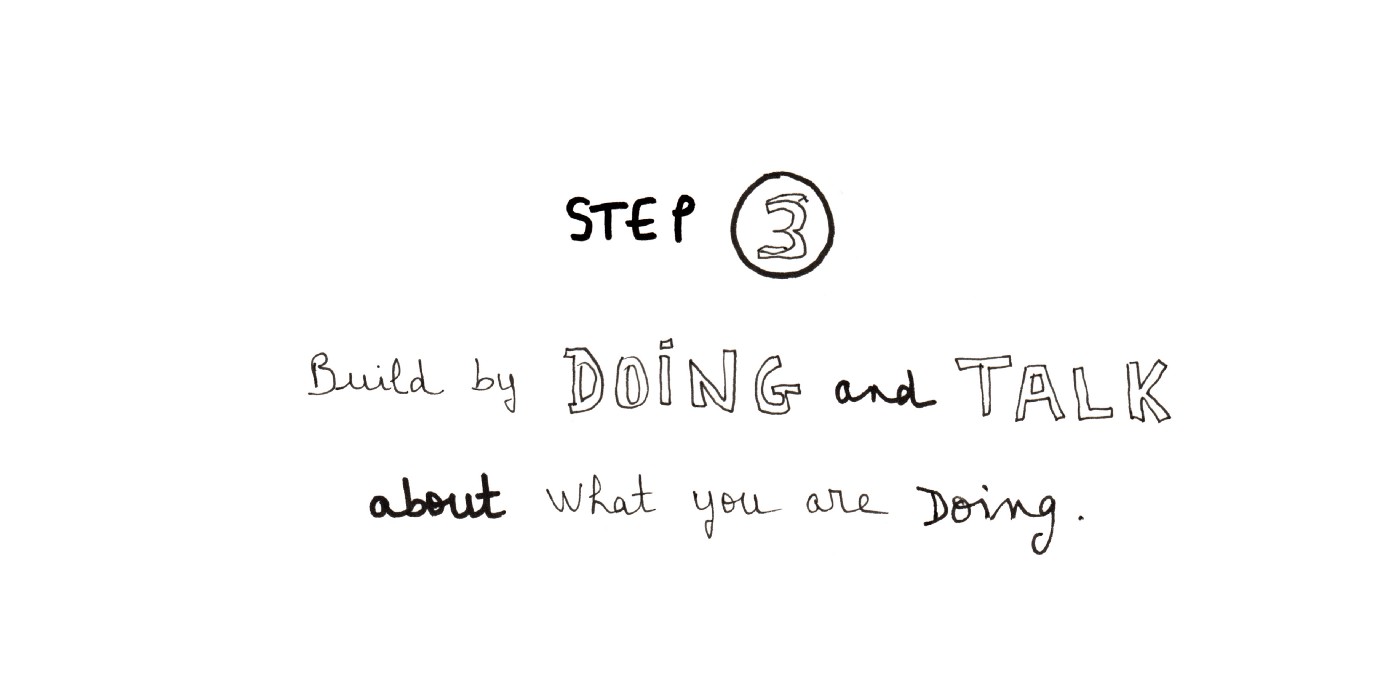
I know that in my own life transmission is crucial and that I have developed a talent for conveying my message to others. It is vital for me to keep engaging, to keep sharing with others what I care about. The truth is that you can be doing it in big ways or small ways, but the important thing is never to stop. I have always believed that the best ideas always come by doing. Very few times have amazing ideas come to me while meditating alone in a room (although meditation is great for mindset, which comes later!).
My first piece of advice would be to keep being active; start today and keep doing it every single day. Make a list of all the places and things you could contribute to on the topics that interest you, whether paid or free. Ask people how you can contribute or create your own platforms to do so (blogs, social media, there are endless ways today!). I always believe that when you are dynamic and put your energy out into the universe, that’s when things can happen to you. When you are dynamic people react to you and your work. Keeping active and contributing also makes you stay relevant and engaged in the conversations that are important to you, it helps people find you, discover your work and engage with you.

with my ideas and it also gave me ideas of how I could best possibly serve people today, such as by writing this article, which originated from an instagram live.
Taking small steps helps you to see where you are going, but it also helps you understand what people want, how people react to your idea and develop it as you go along before you invest months into a fully fledged project. So start engaging before you have it all figured out !
And then reach out to people you know and talk to them about your project. You never know what people will say they can do. It will always surprise you who can do something for you. Make your own list of people who may be able to help you to reach out to right away. And make a plan for how you will reach out to them. But don’t forget to always mention your ideas in all of your conversations, with whomever you speak, because you never do know how deep people’s networks run and just how many people they may know who may be useful to you.
So many of my projects may have never seen the light if it had not been for the people around me I’ve drawn into them. I had had the idea for a podcast for a long time (and interviews already recorded) until one day when I was in New York I told my friend Lee Sean Huang about it over coffee. He liked my idea so much that he proposed to co-produce it with me. He is an amazing editor and is much better than me at telling me when and where to cut things! If it had not been for Lee Sean’s participation in the project, my ideas may still have been in the drawer (or in the cloud). And if you are not out in the world with your work, it cannot inspire people. I also talked widely about my project when it was just an idea to find guests for my episodes. For my first few interviews I solicited people I already knew with my idea because they could trust me with an interview before I launched anything. I then talked to my friends about it and they also introduced me to their spouses, family, colleagues and acquaintances, some of whom later became my guests.
Similarly, my book took life when I found someone to work with me. As I sat down to write my book I felt that something was missing for the project to be 100% what I wanted it to be. I wanted my book to be a funny and easy to read guide on gender equality. When a friend suggested it should be illustrated, it immediately felt that this was the half of the project I was missing! Once I realized that illustrations were exactly what it was missing, I thought of the one person I wanted to do this with, my amazing artist, illustrator, feminist friend Clementine du Pontavice. And while we worked together on that book this project was born out of that book….
Some people can nourish our projects, while others can inspire our own growth in amazing ways. Connect with people, learn from them, ask them questions. I am also happy to have connected with many of the people I have already worked with to exchange, but I have also taken the opportunity to reach out to people whose work I have long admired. I am particularly grateful for having connected with Amy Gray whose agency, New Leaf Management, represents some amazing individuals and for everything that she awakened in my motivation to keep moving my work forward. It came at a time when I really needed to hear to keep working on my book, when I really needed someone to push me to put myself forward.
And you are lucky because there has never been a better time than now to engage with people, when so many other people are simultaneously questioning, repurposing, and reorganizing their own lives. We are all looking for meaningful ways to connect, so you never know what may come out of a simple conversation.
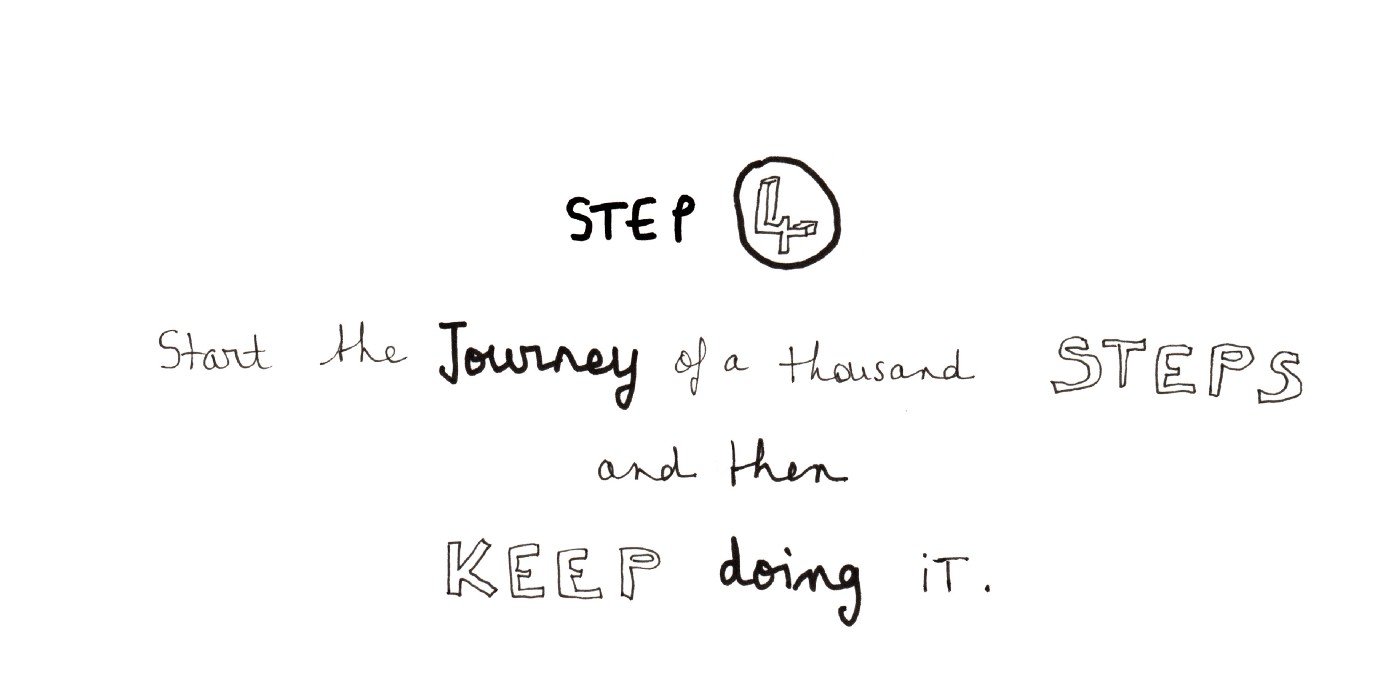
The next step once you map out your why and your how is to actually do the work. This may be the hardest part. To be honest, after many years running programs for entrepreneurs, I’ve seen that the hardest part is not always having the idea, but actually doing the work. Those who make it are not necessarily the most talented, but certainly the most persistent. Weathering the storm is a survival skill. Now set up a plan of how you are actually going to do it. All the thinking and visualizing of our goals won’t help you much if you don’t work towards those goals, in a big or small way, every single day.
As they say, a journey of a thousand miles starts with a single step. So start by figuring out what that step is for you. Think about the easiest possible thing you can do today to get your project started. And remember that you have enough of everything, power, enthusiasm, knowledge to start whatever you want to start today. But all that creative fire will extinguish itself if you don’t start. So pick one place to start. It can be as simple as collecting information, making a post on social media, doing an instagram live, writing a page. If you think about it every single project started with one single action, and we often forget that. I always say that my nonprofit started with an email (reaching out to future partners with my idea) and once they said “yes,” I was forced to start. So what is the first brick you can lay to build your dream today?
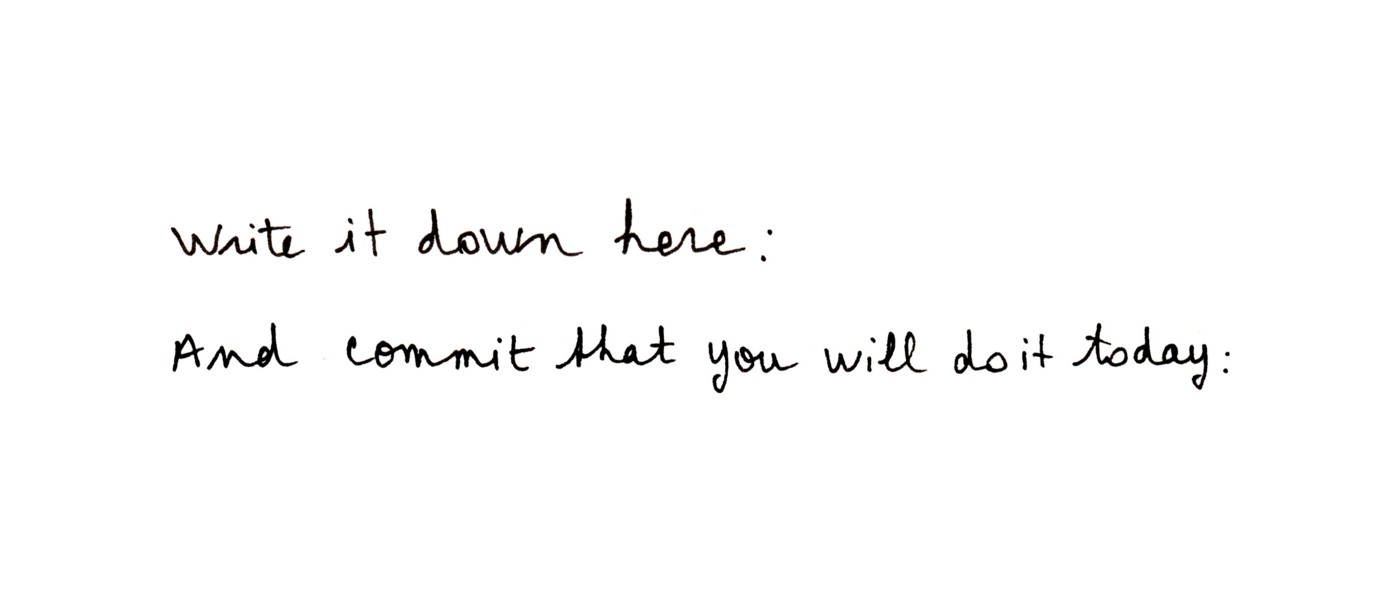

And then…once you start, you have to keep going. Perseverance is the single greatest ingredient for success after purpose.
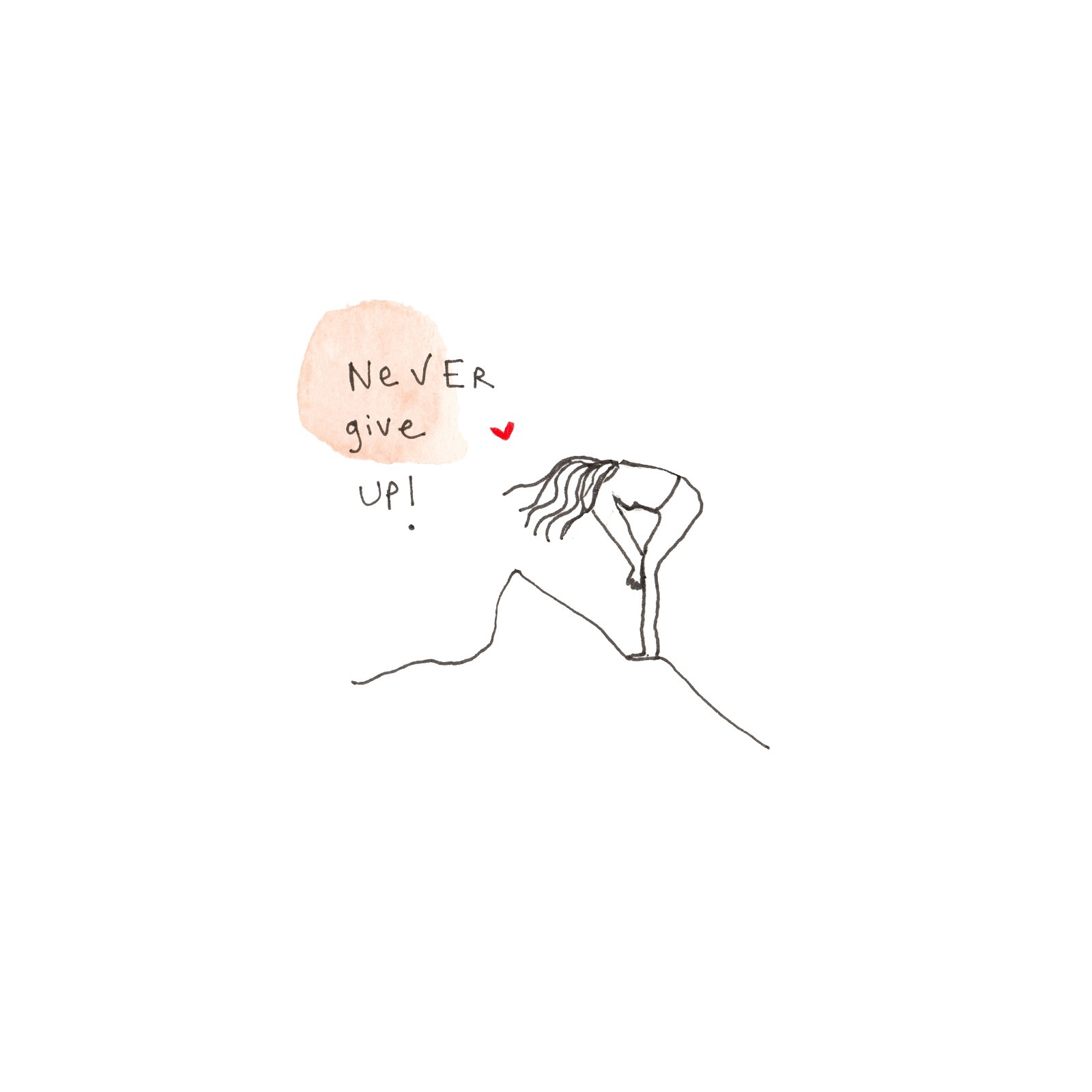
Sometimes when I think of something big that I want to achieve, instead of being inspired, I get overwhelmed by my own dream. When it comes down to it, it is hard to think about how you are going to go from zero words on a page to a bestseller. The truth is that in life you struggle to start things and then you struggle to keep going. Struggles and challenges don’t disappear, they just evolve as your work does. This is why you have to break down everything into daily goals that you are going to achieve. I cannot stress enough the importance of feeling that you are doing something every single day. As someone pointed out to me when I struggled to write my book, ”if you work on 30 minutes of your book every day, isn’t that better than nothing?” Yes, even if I worked as little as 30 minutes every day on it the truth is that eventually, if I kept that tiny commitment, I would complete it. So I break down my day into a big planner and I know that from 6–7am I am having breakfast and journaling and 8–11am I am writing, and then walking the dog from 11am to 1pm, giving myself freedom to do all else in the afternoon. Whatever I do or don’t do, however inspired or uninspired I feel beyond that is dispensable. So I make the least viable commitment to my dream.
Dan Beverly, a coach and good friend told me that there is an actual term for this, it’s called setting output goals instead of outcome goals. The key is to separate what you want to get done from how you are going to do it. My problem was that I was just thinking about getting my book finished whereas I should have been thinking about exactly how I was going to achieve that. And of course even if the book is not yet finished, I am still doing and accomplishing something every day !

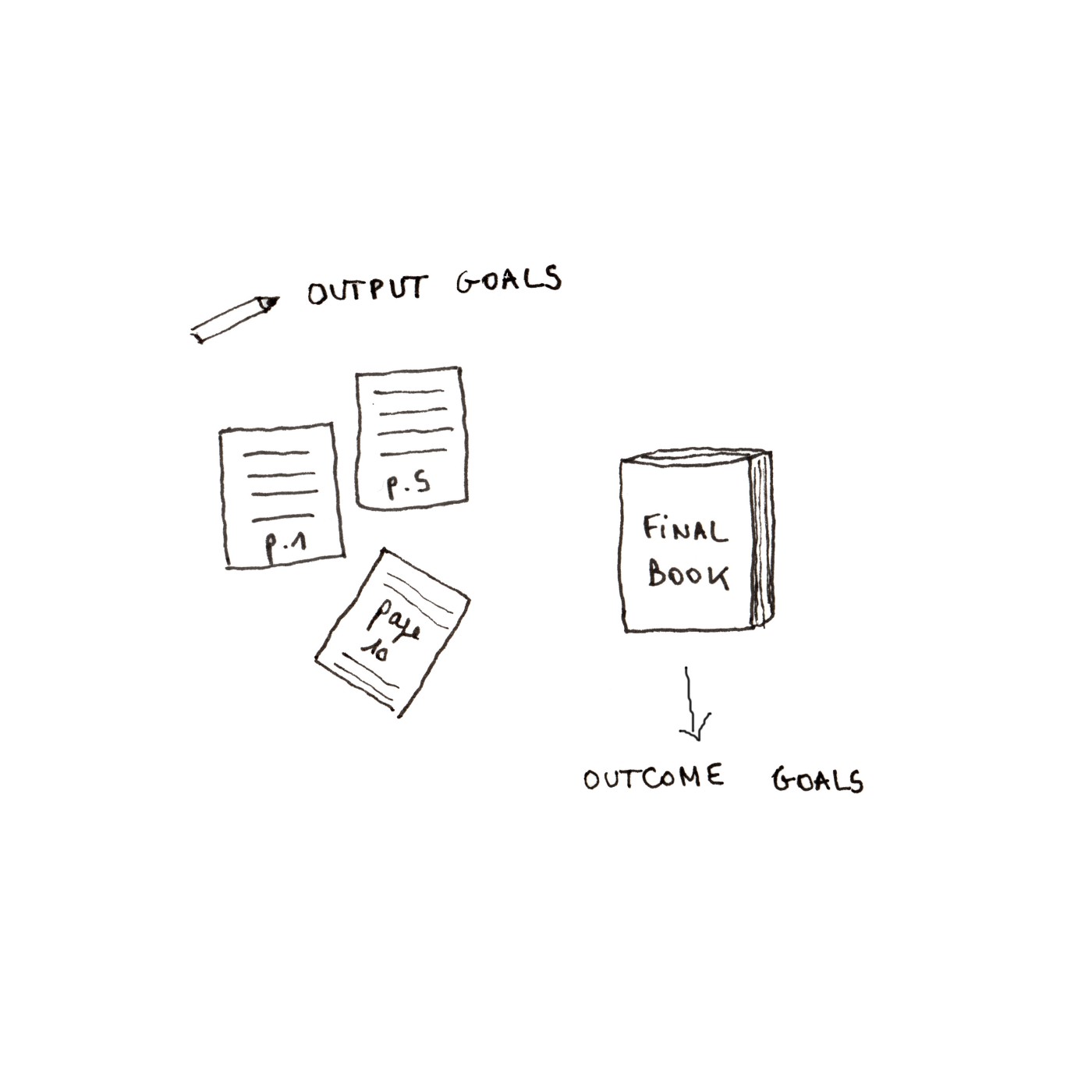
And that is where it gets hard. When you have to show up every single day. But every day I get up and do the work. I face and slay all my inner monsters everyday that don’t want me to touch the page….And every day that I work on it a little more I find that I’m building a new rod for the ladder to get myself out of the hole.
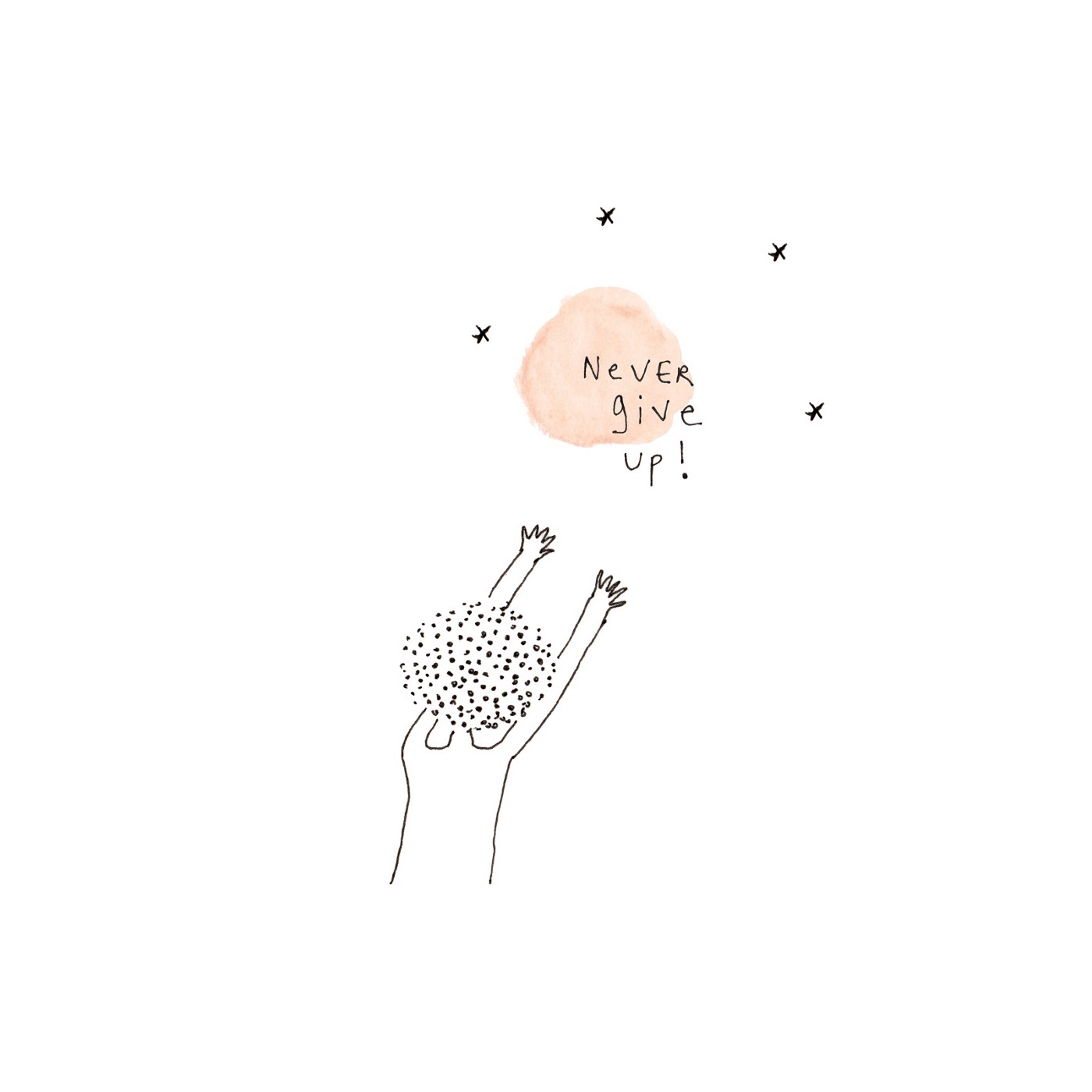

Yes I mean actually write to people individually to tell them about your work. Call them, send them an email, but tell them why they should be interested in what you are doing. You will need 100 people to believe in your work before anyone else does (and maybe they will just because they know you and believe in you). Create a list of the first 100 people you want to tell on an excel file with their emails (because you know they will be super interested or they really care about you) and if it makes you feel better divide the list into 5–10 people per day. Give them an opportunity to buy, share, or engage.
As Seth Godin (who writes the best books about this subject) says “every important idea starts out on the fringe. It’s not obvious, proven or readily explained. And a tiny group of people, people who like the fringe, engage with it.” You have to have to make the effort to really engage with your fringe before it will ever get to the masses. And if you don’t it won’t get anywhere.
Ok it may seem ridiculous to contact a hundred people, but you can’t wait for your idea to speak for itself. A lot of people say that it is so hard to start, but that’s because they are often unwilling to do the unglamorous work of actually starting. I always say that it is completely different to get your first 10 clients than it is to obtain your 11th. You have to work so much harder and put in so much more before you see any instant results. There is no such thing as instant success, which is why it is your job to make yourself known. Whatever you do please do not wait for people to find you ! Instead it is up to you to take the opportunity to show how valuable you are.
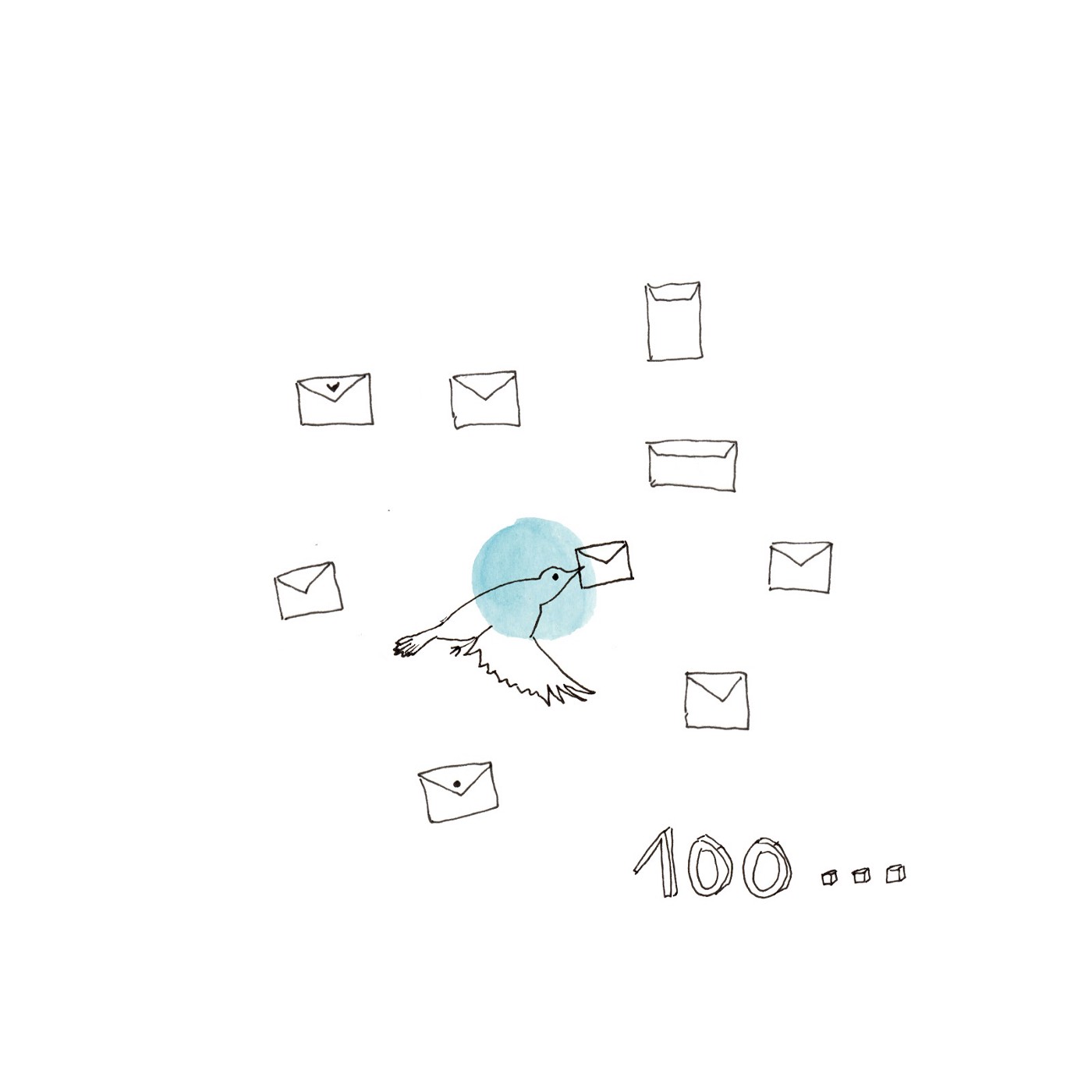
I’ve personally experienced power of the hard work of outreach with so many of my own projects. When my nonprofit was just an idea I sat long hours in front of my computer to send countless emails asking people (many of whom I did not know) to volunteer or asking people for things. Some of them responded, some of them passed on my message, and some of them are still there so many years later. Today, I no longer have to send emails to tell people about my work because people learn about it from other people, they learn about it from the media, they learn about it from social networks. But at some point I had to activate all that, otherwise I would have never had my first supporters, my first volunteers, my first participants. Eventually your efforts pay off exponentially, and the more people talk about you, the more people talk about you.
And even though I have built my community throughout the years, I still reach out to individuals periodically with projects large or small. I have done it most recently when I launched a new sexual harassment prevention training, which I offered people to try for free to have the opportunity to learn and share. I did the same thing when I released my podcast. I sent people text messages so that they could listen to it on their phones. I personally invited them to listen, so they actually listened and gave me feedback and thoughts, which encouraged me to continue my work.
Even though today I have a substantial community that engages with my work, I know that once my book comes out I will still sit down and take the time to write to 100 people to tell them about it, asking them to contribute to the crowdfunding campaign I will launch by purchasing it. You are more than welcome to be one of them by signing up here !
But What Do You Do When You Want to Give Up on Your Dream?
What about when I wake up and I want to give up? Even when you believe in what we are doing 150% there will still be days when you wake up and want to give up. I have a lot of those. Instead of punishing myself for them and forcing myself to keep going, I just let go.
Well, at least in the moment.
First, you must recognize that whatever it is that you are thinking in the moment is just a thought and that you are not your thoughts. Just because your mind is telling you whatever it is telling you at that given moment does not make it true. But the truth is that you will still keep thinking those thoughts. If your thoughts do get in the way then stop working on your book, drop whatever you are doing, and just worry first of all about your mindset. Our mindset can shift in seconds as our emotions change. Go for a walk, listen to the waves of the sea, meditate, call a friend, do whatever makes you happy. Keep your mindset always high. Do whatever it takes to take care of yourself and always remember that you are the origin of all your projects. Do not create from a place of torture (yes by forcing yourself).

And even when you are so motivated, so much stuff always happens to you along the way. Thankfully my entrepreneurial experience has taught me that feeling as if you want to give up every other day is normal. And I also know that that’s exactly what I don’t have to do. Along the way you make mistakes, stuff goes wrong, things just happen to you. Just when I got myself so motivated I realized that my podcast files were corrupted, my computer broke down, and I questioned myself so many times about whether the universe was telling me to stop. But instead of asking myself whether I keep going, I ask myself, “how can I keep going?” And precisely as we said before when there is no solution, you find the solution.
We are our own biggest obstacles.
We often believe that our dreams are stopped by circumstances, but truly they are stopped by ourselves, or rather by the way we react to circumstances. For several years I did not find the courage to write my book because I could not find a publisher to publish it. I wanted to write a book for men, but I was told by the publishing world that men do not read books written by women. Thankfully my friend Pippa Malmgrem who is a very impressive economist told me I could do it anyways, that I did not need anyone to validate my idea because I knew my subject better than any publisher. She also gave me all her time to teach me how I could do it. It is ok to pursue your idea even if you are the only person that believes in the idea. And that’s the truth, everything else is an obstacle we make up. And truth be told, I would rather be radical than write something expected, which is exactly why I believe there is a space for my voice, don’t you?
Like Robin Sharma says if your dreams are not foolish enough that people think you are ridiculous for believing in them, then you are not dreaming big enough. And he knows what he’s talking about since his book, The Monk Who Sold His Ferrari, initially self-printed at Kinko’s, has since sold millions of copies and been translated into 51 languages.
Trust your gut. Listen to your heart. The world wasn’t built by people with small vision and minor thoughts. It was built by the misfits, eccentrics and oddballs who had the courage to passionately follow the voice of their dreams.
-Robin Sharma

Create A Community to Stay Afloat
Since you already know that at some point you will want to give up, prepare yourself for not doing so. Surround yourself with people who are doing similar things (there are so many virtual groups at your fingertips). Even better you can have a cohort, and a community of support. One woman who went through our program had the project of putting on a comedy she wrote denouncing violence against women and she truly wanted to give up on it until everyone else promised that we would all buy tickets to see the play (which we all did of course, and if you want to see that story you can do so here). Other people can motivate you when you can no longer motivate yourself. Each person at some point or other falls, but the group always goes forward, so to stay with the group, you will have no choice but to get up.
Sometimes it’s great to have people that are going through the same thing as you, other times you will need people who can answer the questions to help you get up. So start building a list of people to call when you get stuck and don’t know what to do.
And in my own little way, because I believe from the depth of my heart that the world will be a better place if all our projects see the light, I commit to helping you with this. Join me in this Facebook Group to talk about what you are working on, share your journey and connect, and start following my instagram live resilience stories. I look forward to hearing about and supporting all the beautiful things you are building. Please keep building!

Go Out And Tell Your Story
Once you achieve whatever you set out to achieve make sure you go out and tell others. Doing great work has an exponential effect on the world. Whatever you do inspires so many other people to do great things, too.

And guess what? When you are done going through all these steps and rise higher than the place from which you fell, you will have the perfect story to tell. Put the pieces together of how you made it happen to share with others. I can’t wait to hear it!

Thank you, for reading. And a huge, big heartfelt thank you to all the individuals mentioned in this story for all the love they invested into believing in my projects, giving me guidance, and making sure they see the light. And first and foremost to Clementine, whose beautiful drawings made this particular story come to life.

